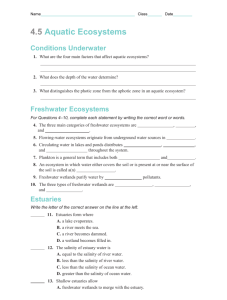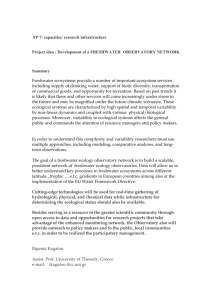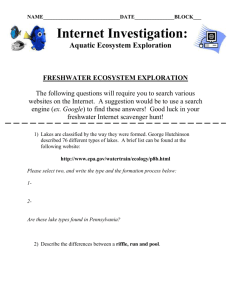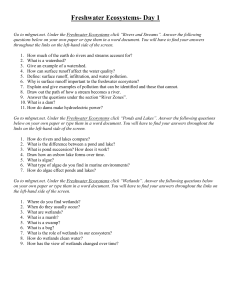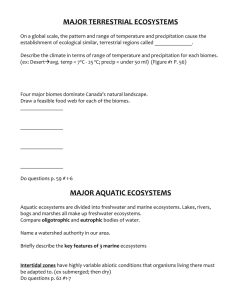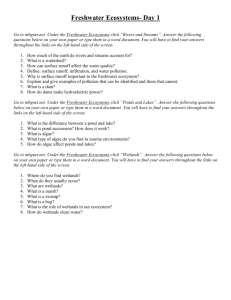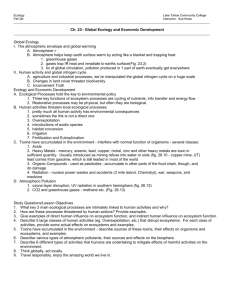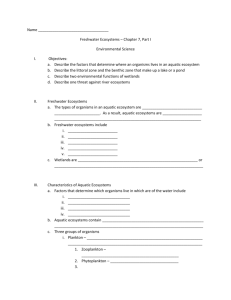Aquatic Ecosystems Notes
advertisement
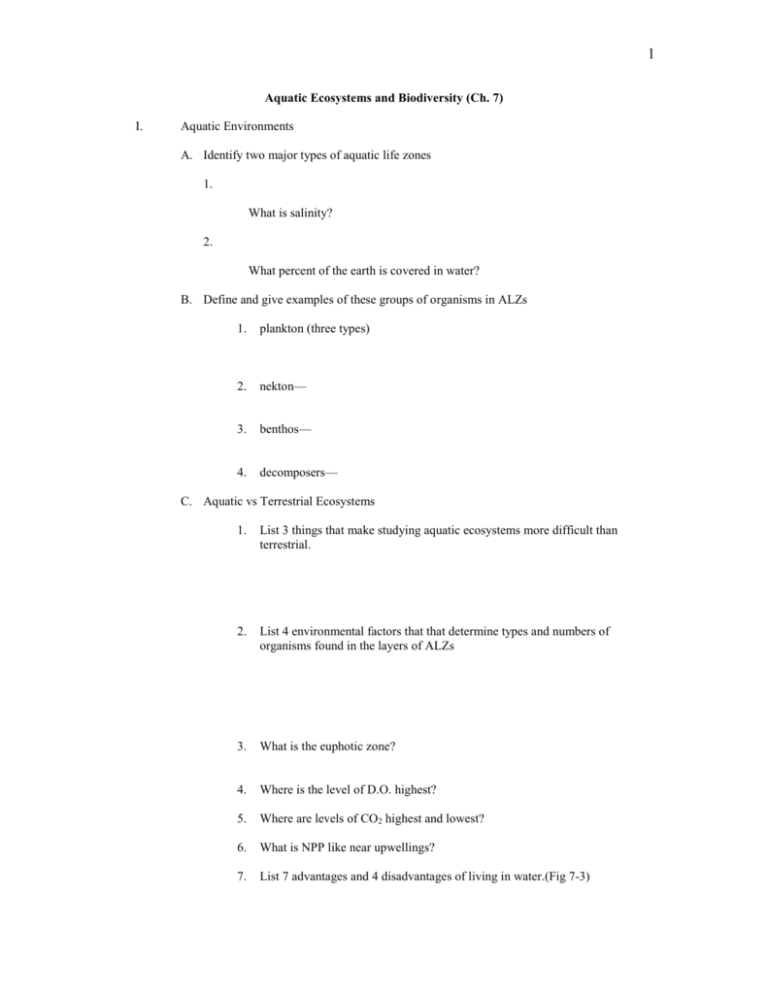
1 Aquatic Ecosystems and Biodiversity (Ch. 7) I. Aquatic Environments A. Identify two major types of aquatic life zones 1. What is salinity? 2. What percent of the earth is covered in water? B. Define and give examples of these groups of organisms in ALZs 1. plankton (three types) 2. nekton— 3. benthos— 4. decomposers— C. Aquatic vs Terrestrial Ecosystems 1. List 3 things that make studying aquatic ecosystems more difficult than terrestrial. 2. List 4 environmental factors that that determine types and numbers of organisms found in the layers of ALZs 3. What is the euphotic zone? 4. Where is the level of D.O. highest? 5. Where are levels of CO2 highest and lowest? 6. What is NPP like near upwellings? 7. List 7 advantages and 4 disadvantages of living in water.(Fig 7-3) 2 II. Saltwater Life Zones A. Importance of the oceans Make a list of ecological and economic services the oceans provide (fig 7-5) Ecological: Economic B. Major parts Label and define (see pgs 130, 131, 136, 137) the diagram given to you in class. C. Estuaries, Coastal Wetlands, and mangrove swamps 1. define each & provide examples estuary— coastal wetland-- mangrove forest-- 2. What are temperature and salinity levels like in coastal wetlands and estuaries? 3. What is the result of constant water movement in these areas? 4. What else do these areas do? (4 things) 5. How has man treated these areas? D. Rocky and Sandy shores What is the intertidal zone? What are some difficulties nature presents to organisms living in this area? 3 E. Barrier Islands What are they? What do they do? What are dunes and what do they do? F. Coral Reefs Where are they? Describe their ecological complexity. Why are they vulnerable to damage? List the ways that humans impact coral reefs. (Fig 7-13) G. General Human impact on marine ecosystems. Using Fig 7-14, list ways in which humans have impacted marine ecosystems. Why has this happened? Do you think it will get worse or better? Why? III. Freshwater Life Zones A. Lakes, Wetlands, and Rivers 1. What is the salinity of freshwater? Of sea water? (ask Mr. Ko) 2. Identify ecological and economic services provided by FLZs. Fig 7-15 Ecological Economic 4 B. Lakes 1. What is lake and how are they created? 2. Label and define on the sheet given in class. (Fig 7-16) 3. What are overturns? When do they occur? What are two things they do? 4. Compare/define oligotrophic, eutrophic, and mesotrophic lakes 5. What is cultural/accelerated eutrophication? (Discussed back in the ecosystems chapter, so refer to that for details) C. Streams and Rivers 1. What is surface water and runoff? 2. What is a watershed or drainage basin? 3. What is the riparian zone? (See Mr. Ko) D. Freshwater inland wetlands 1. What are they? Include examples. 2. List some ecological and economic services provided by inland wetlands. Ecological Economic E. Human impact on freshwater systems Identify the four major impacts humans have had on freshwater ecosystems.
